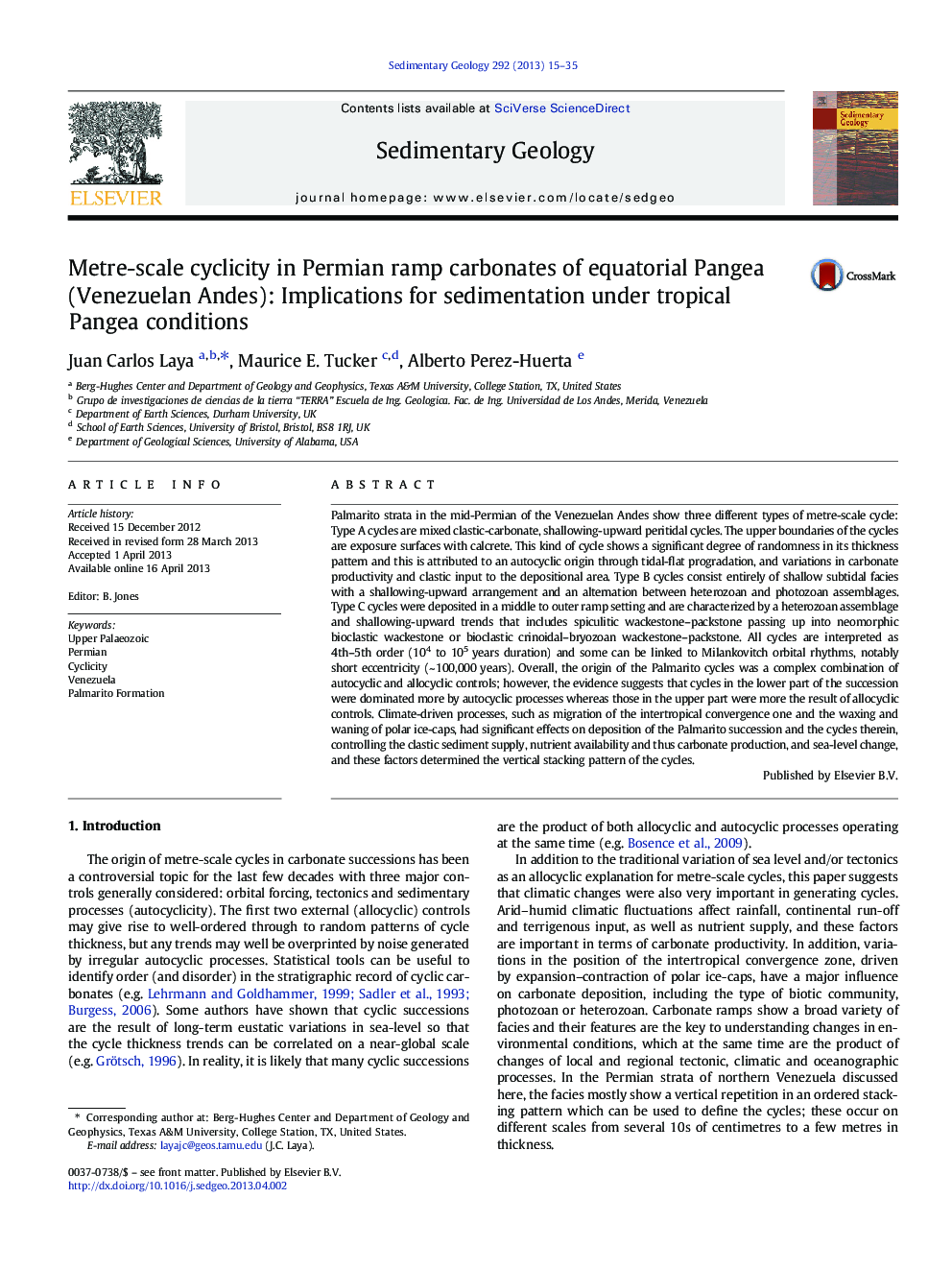| کد مقاله | کد نشریه | سال انتشار | مقاله انگلیسی | نسخه تمام متن |
|---|---|---|---|---|
| 4689537 | 1636071 | 2013 | 21 صفحه PDF | دانلود رایگان |

Palmarito strata in the mid-Permian of the Venezuelan Andes show three different types of metre-scale cycle: Type A cycles are mixed clastic-carbonate, shallowing-upward peritidal cycles. The upper boundaries of the cycles are exposure surfaces with calcrete. This kind of cycle shows a significant degree of randomness in its thickness pattern and this is attributed to an autocyclic origin through tidal-flat progradation, and variations in carbonate productivity and clastic input to the depositional area. Type B cycles consist entirely of shallow subtidal facies with a shallowing-upward arrangement and an alternation between heterozoan and photozoan assemblages. Type C cycles were deposited in a middle to outer ramp setting and are characterized by a heterozoan assemblage and shallowing-upward trends that includes spiculitic wackestone–packstone passing up into neomorphic bioclastic wackestone or bioclastic crinoidal–bryozoan wackestone–packstone. All cycles are interpreted as 4th–5th order (104 to 105 years duration) and some can be linked to Milankovitch orbital rhythms, notably short eccentricity (~ 100,000 years). Overall, the origin of the Palmarito cycles was a complex combination of autocyclic and allocyclic controls; however, the evidence suggests that cycles in the lower part of the succession were dominated more by autocyclic processes whereas those in the upper part were more the result of allocyclic controls. Climate-driven processes, such as migration of the intertropical convergence one and the waxing and waning of polar ice-caps, had significant effects on deposition of the Palmarito succession and the cycles therein, controlling the clastic sediment supply, nutrient availability and thus carbonate production, and sea-level change, and these factors determined the vertical stacking pattern of the cycles.
Journal: Sedimentary Geology - Volume 292, 15 June 2013, Pages 15–35